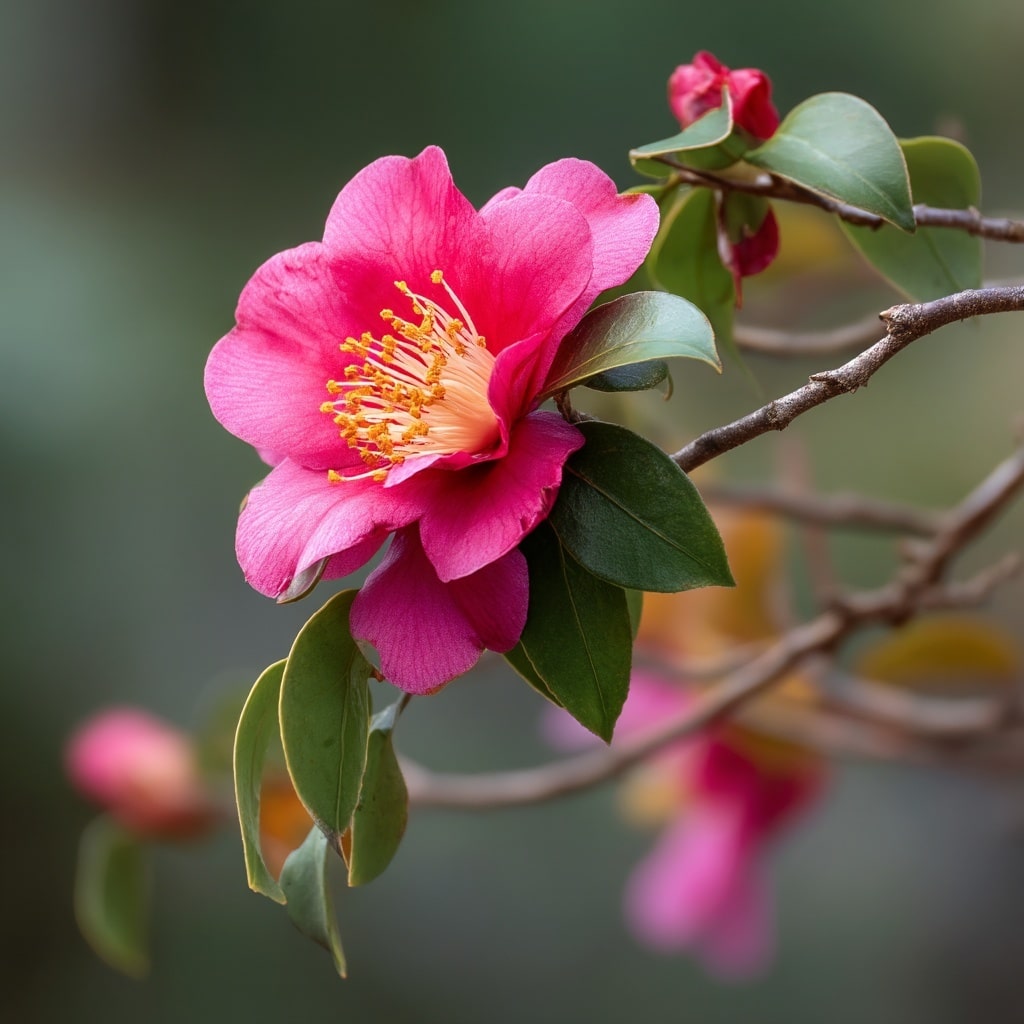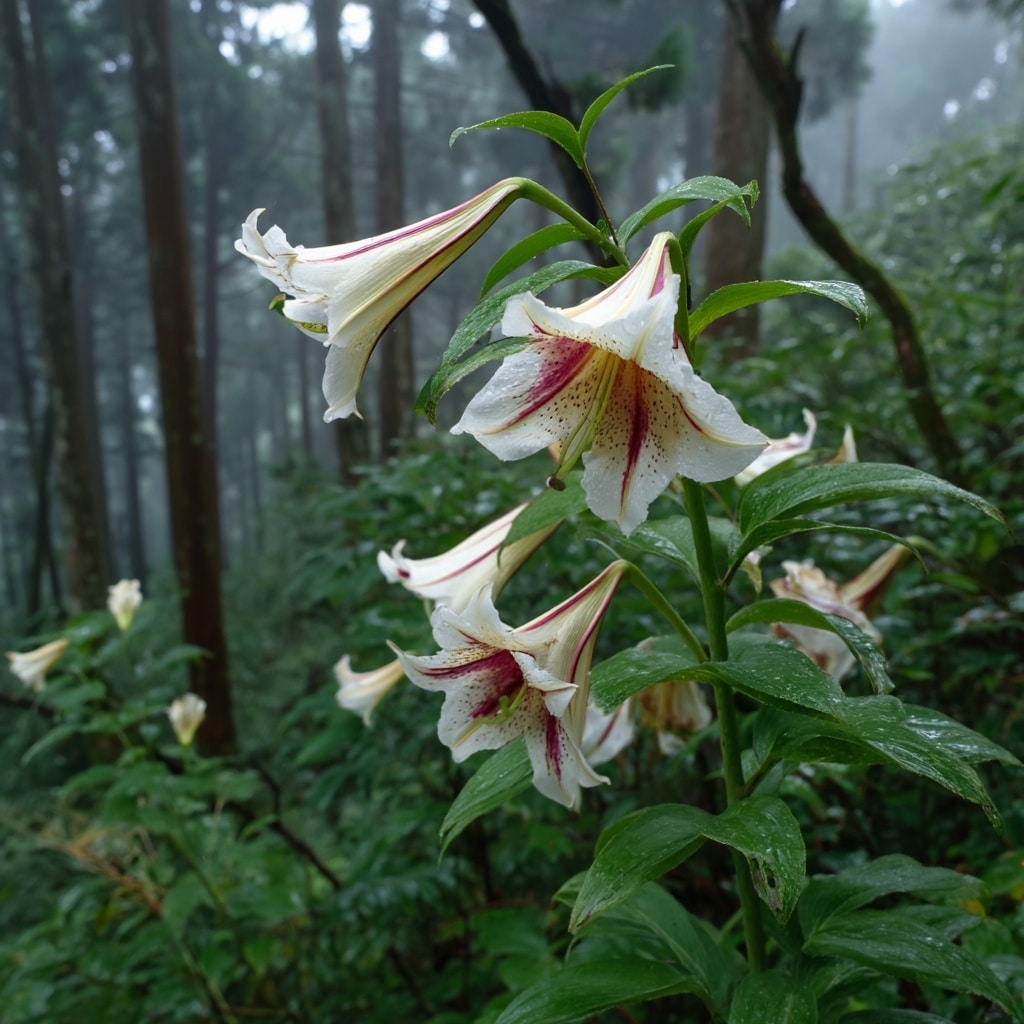Japanese flowers are more than just beautiful parts of the landscape—they carry centuries of meaning, symbolism, and cultural depth. In Japan, flowers are a language of their own. Known as Hanakotoba, this floral vocabulary expresses emotions that words often cannot. Whether gifted during milestones or admired in quiet gardens, each bloom reflects values like love, honor, and transience.
Rooted in Buddhist teachings and seasonal appreciation, japanese flowers embody the nation’s deep respect for nature and the present moment. Their presence in festivals, poetry, and daily life reveals how intertwined these blossoms are with Japanese identity.
In this article, we’ll explore five famous japanese flowers and their cultural significance—highlighting their beauty, meaning, and timeless role in Japanese society.
Table of Contents
1. Lacecap Hydrangea (Gaku Ajisai)
Among the many iconic Japanese flowers, the Lacecap Hydrangea holds a special place for its understated elegance. Known locally as Gaku Ajisai, this variety of hydrangea features a flat bloom: large outer petals encircle delicate clusters of tiny blue or purple florets in the center—like a picture within a frame.
The name Gaku means “frame,” reflecting the flower’s unique structure. Traditionally blooming during Japan’s rainy season, these flowers line temple paths and countryside gardens, offering quiet beauty on misty days.
In the language of Hanakotoba, Lacecap Hydrangeas symbolize pride. They are often given to someone you admire or respect, especially in moments where words may feel inadequate. The combination of intricate detail and calm color also makes this flower a symbol of heartfelt sincerity.
2. Japanese Buttercup (Ranunculus japonicus)

Bright and cheerful, the Japanese Buttercup is a wildflower that adds golden charm to Japan’s natural scenery. Found from the northern hills of Hokkaido to the subtropical fields of Okinawa, this small yet striking bloom is part of everyday rural landscapes.
With its five rounded yellow petals and vivid center, this buttercup catches the eye despite its modest size. Its leaves, often said to resemble a horse’s hoofprint, add a touch of folklore to its identity.
In Japanese flower symbolism, the buttercup is associated with joy and gratitude. It’s a gentle reminder to appreciate the small wonders that brighten our lives. This flower doesn’t need to shout—it simply brings happiness to those who pause to notice it.
Its widespread growth and humble beauty reflect a key theme in Japanese culture: that serenity and meaning can be found in the simplest forms of nature
3. Japanese Apricot (Prunus mume)

Among the most cherished Japanese flowers, the Japanese Apricot, or Ume, carries deep emotional and seasonal significance. Blooming in late winter to early spring, its delicate pink blossoms signal the quiet arrival of renewal—often before the iconic cherry blossoms appear.
The buds begin as rich magenta and open into soft pink flowers with a sweet, honey-like fragrance. Their scent fills the air in traditional gardens, often near shrines and temples where they’ve been planted for centuries.
In Hanakotoba, the Japanese Apricot symbolizes elegance, loyalty, and a pure heart. Its ability to bloom in the cold reflects inner strength and grace under pressure—a quiet resilience admired in Japanese aesthetics.
Beyond beauty, Ume blossoms are also practical. They’re used in teas, liquors like umeshu, and even pickled delicacies. This blend of usefulness and symbolism makes the Japanese Apricot a beloved bloom in daily life and seasonal celebrations.
4. Camellia Sasanqua (Sazanka)

Elegant and quietly dramatic, Camellia Sasanqua, or Sazanka in Japanese, is one of the most graceful Japanese flowers to bloom in the colder months. Its deep pink, red, or white petals appear from late autumn through winter, brightening gardens when most other plants lie dormant.
Unlike other camellias that drop their blooms whole, Sazanka’s petals fall gently one by one. This graceful shedding has inspired poetic comparisons to love, loss, and dignity. In Hanakotoba, the Camellia Sasanqua is linked to romantic love and the idea of graceful farewell—a union that endures even beyond parting.
Traditionally found in southern Japan, especially in Shikoku and Kyushu, the flower is often planted near temples and homes for both its beauty and symbolic meaning. Its fragrance, though subtle, adds to its allure as a symbol of understated affection.
The Sazanka teaches us that even in endings, there is softness—and in quiet moments, deep connection.
5. Japanese Giant Lily (Cardiocrinum cordatum)

Towering and majestic, the Japanese Giant Lily, known in Japan as Uratensō, stands out among Japanese flowers for its dramatic height and bold presence. Found in the shaded forests of Honshu and other mountainous regions, this lily can grow over six feet tall, crowned with clusters of large, trumpet-shaped blossoms.
Each bloom features elegant white petals streaked with red or purple veins, giving the flower a mystical and almost sacred appearance. Its blooms emerge in summer and release a soft, sweet fragrance that lingers in the mountain air.
In Hanakotoba, the Giant Lily represents purity and majesty. It’s often linked with renewal and the pursuit of higher ideals, echoing its tendency to grow tall toward the forest canopy. Because of its rare blooms—sometimes taking years to flower—it’s also seen as a symbol of patience and long-awaited rewards.
This flower reminds us that beauty doesn’t always arrive quickly—but when it does, it commands quiet reverence.
Conclusion
From the quiet elegance of the Japanese Apricot to the towering grace of the Giant Lily, Japanese flowers offer more than seasonal beauty—they tell stories of love, resilience, gratitude, and spiritual connection. Rooted in centuries of cultural tradition, these blossoms serve as emotional messengers in a society where subtlety is cherished.
Whether you’re walking through a garden in Kyoto or simply admiring a bloom on your windowsill, each of these flowers invites you to pause, reflect, and appreciate the fleeting beauty of the moment. In a world that often moves too fast, Japanese flowers remind us to feel more deeply and speak with meaning—even in silence.





